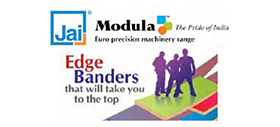Understanding paper impregnation

Excess moisture, insufficient resin coverage and high temperature variations can result in ‘blocking’.
Paper impregnation, a process crucial in the production of decor papers, involves several technical factors that must be carefully managed to achieve the desired quality.
Despite the precision involved, various variables make the process complex, from paper and resin quality to machinery settings, environmental conditions, and operator skill.
Paper impregnation blends chemistry, physics and precise operational control. This article focuses on one of the most common problems in the industry – blocking – and how to effectively address it.
Paper impregnation is a complex and multifaceted process that requires a combination of technical knowledge and practical experience. Understanding the interplay between the various factors involved in impregnation – from paper quality to resin application to environmental conditions – is essential.
Equally important is the ability to observe, analyse, and act quickly when problems arise, as in the case of blocking. By integrating technical expertise with keen observation and problem-solving skills, operators can optimise the impregnation process and produce high-quality decor papers with minimal issues.
Key factors
The quality of paper and resin are of primary importance. If either is outside the technical specifications, the impregnation process will be compromised. Variations in resin quality, paper absorbency, and application levels can cause significant deviations in the final product.
The impregnation line itself, including resin mixing systems and drying ovens, plays a vital role in achieving uniform resin distribution and maintaining the proper temperature and speed. Adjusting these parameters affects the resin absorption rate and the paper’s final quality.
Temperature and humidity levels in the workspace can heavily influence the impregnation process. Even slight changes in the environment can lead to variations in the paper’s absorption and resin behaviour, which can, in turn, affect the final product.
Additives such as anti-blocking agents and other chemicals are crucial for improving the technical characteristics of impregnated paper. However, these additives cannot entirely resolve underlying issues in the process. They assist in enhancing the paper’s performance but should not be seen as a complete solution.

To ensure efficient paper impregnation, it is beneficial for press operators to have experience as impregnation line operators.All images for representational purposes only.
Impregnation ‘art’
After the impregnation process, the paper undergoes pressing. The impregnation characteristics – such as resin content and uniformity – significantly influence the pressing process and the quality of the pressed boards. Therefore, the impregnation process must be harmonised with the pressing cycle to achieve optimal results.
While technical understanding is essential, there’s also an element of artistry in the paper impregnation process. This “art” involves a critical and observant approach, where operators must know when and how to intervene based on their experience and knowledge.
The art of impregnation comes into play when operators need to critically analyse the situation. They must identify what is happening during the process, distinguish between normal and abnormal occurrences, and take appropriate action. This requires experience and the ability to adjust the process on the fly.
As with any complex process, over-correcting a minor issue can result in more significant problems. Operators must approach adjustments carefully, ensuring they understand the full impact of any change on the process. Overreacting can lead to hundreds of square meters of out-of-specification paper, increasing costs unnecessarily.
Experience plays a critical role in paper impregnation. As an operator, knowing how to troubleshoot and correct problems based on past experiences can prevent minor issues from escalating. For instance, understanding how moisture or temperature affects the paper can help operators make informed decisions, saving both time and resources.
What’s ‘blocking’?
One of the most common and disruptive issues faced in paper impregnation is blocking. This occurs when the impregnated paper sheets absorb moisture from the environment and begin to stick together. The severity of blocking can range from light tackiness to complete adhesion of the paper, rendering it unusable.
Causes of blocking could include:
• Excess moisture in the paper can lead to blocking, as it increases the paper’s tendency to absorb and retain moisture from the environment, causing sheets to stick together.
• Insufficient resin coverage on the paper, whether due to poor resin application or an incorrect formula, can result in papers with inadequate resistance to moisture absorption, leading to blocking.
• If the impregnated paper is stored under unfavourable conditions – such as high humidity or temperature variations – it is more likely to absorb moisture, resulting in blocking.
• In high-humidity conditions, such as during the rainy season, the ambient moisture in the air can exacerbate blocking. Without proper anti-blocking additives or corrective actions, the paper’s surface becomes more susceptible to adhesion.
There are three more causes, which are rarely observed. If the paper exits the first resin bath (typically urea resin) at a high temperature, the melamine resin from the second bath may be absorbed deeper into the paper, leading to exposure to ambient moisture, which causes blocking.
If the paper is too hot or the impregnation speed is too high, the urea resin may not fully dry, leaving the paper tacky. This tackiness can mix with the melamine resin, causing moisture absorption and blocking.
During the rainy season, moisture levels in the environment are higher. Observing how anti-blocking agents perform in these conditions is crucial to prevent moisture absorption, which would otherwise contribute to blocking.
Cross-training
Anti-blocking agents help prevent the paper from sticking together by reducing the moisture absorption properties of the impregnated paper. However, these additives should not be viewed as a catch-all solution. They assist in improving the paper’s ability to resist moisture but cannot eliminate underlying issues in the impregnation process itself.
While anti-blocking agents are essential in certain scenarios, especially in humid conditions, they are only one part of the solution. Operators must focus on optimizing the entire impregnation process, ensuring that all variables—temperature, moisture content, resin grammage, and environmental conditions—are under control to avoid excessive reliance on additives.
To ensure a smooth and efficient impregnation process, it’s beneficial for press operators to have experience as impregnation line operators. This cross-training provides a deeper understanding of how the impregnation process works and how it integrates with the pressing stage. By having this knowledge, press operators can better troubleshoot and resolve issues, ensuring the final product meets quality standards.

– The writer is a professional with extensive experience in the field of paper impregnation. At GlobalTech Paper Impregnation, where he works, he focuses on refining and optimising the impregnation process for decor papers.
Comments

- European symposium highlights formaldehyde emission limits
- Egger adopts holistic approach to waste management
- Weber machines dovetail into best practices
- Hymmen’s smart2i facilitates digitally mapping production
- Understanding paper impregnation
- Rising from the ashes
- Canada’s Western hemlock adorns Indore’s municipal hub
- Hans Weber sets up demo centre in Bengaluru
- More power to woodworkers!
- Record success in its silver jubilee
- New IWMMTA team steps into driver’s seat
- imos: enhancing furniture sales, production with AI
- ‘Eco-friendly’ artificial grass? You must be nuts!
- Ligna all set to strike gold this May
- ‘For customers, our lab is an open book’
- Anticipation for smart components at Interzum 2025
- Furtech 2025 beckons Indian furniture industry
- HIFF 2025 invites woodworking professionals in September
- CIFF 2025 reimagines global furniture innovation
- Decora makes a mark at Dubai Wood Show
- Understanding PUR glue in membrane press operations
- Machining compact laminates needs precision, durability
- Biesse Customer Care: innovations in support
- Canadian Wood showcases innovative luxury designs
- Felder reaffirms status as important player in India
- FFSC pavilion bridging skill gap
- Automation to VR, Homag shows it all
- SETS Machinery showcases coating solutions
- Sugatsune impresses with space-saving solutions
- Exterior wood: Rejuvenating with Protego’s solutions
- Yalian’s integrated pressing solutions
- Garant’s smart filters ensure safer workspaces
- Aryamman ushers Staynu tech for furnishings
- Hafele’s RE-Twist raises bar on security
- AWM makes lock, hinge slots easy work
- Biesse’s Akron ensures edge banding excellence
- Hettich sliding systems for precision functions
- Jai’s top-of-the-line wood and panel processing machines
- Schmalz shows benefits of automated handling
- Richwood’s Calibrated Filler is a gamechanger
- Coohom gives wood interiors AR edge






































